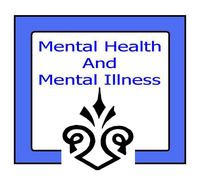
The last of the major anxiety disorders to be discussed in this series is Post Traumatic Stress Disorder or PTSD. It is another one of the combination of emotional and neurological disorders that remains without complete understanding. As with other mental health problems, it occurs along a continuum and has varying degrees of disabling symptoms. Generally speaking, PTSD is a reaction to a traumatic event like, fire, flood, natural disasters, assault, domestic abuse, rape, terrorism, and war. This can also be triggered by seeing a traumatic event, not just having it happen personally.
Although this illness has been known for centuries, the first recognized classification came about during World War I. Soldiers who were under constant fire and barrage of enemy shells suffered reactions that at first were considered a form of cowardice. But, over time it was determined to be an emotional and physical reaction to the fear and unpredictability of combat. At that time is was called “shell shock”, and later “combat stress reaction”, and is now called PTSD.
There are three main categories of the symptoms of PTSD:
1. Reliving the event which causes day-to-day activities to be disturbed. This may include flashbacks of the event, repeated memories of the event, and nightmares and dreams of the event.
2. Avoidance of the event, causing a numbing of the senses, feeling detached, lack of interest in life, avoiding places and people that may be reminders of the event, and feeling that there is no real future.
3. Physical manifestations, like difficulty in concentration, being startled easily, hyper-vigilance, irritability, and difficulty falling asleep or staying asleep.
As with other anxiety based disorders there may be other physical concerns. Rapid heartbeat, dizziness, sweating, fainting, and chest pressure may occur.
Although as a case manager, I have had several patients with PTSD, there is not an easy way to construct a vignette to further clarify this disabling condition. There is however a great deal of information about PTSD on the web and I would suggest a search to learn more. The fact that this disorder presents in so many different scenarios speaks to the complexity and understanding of this illness.
Although this illness has been known for centuries, the first recognized classification came about during World War I. Soldiers who were under constant fire and barrage of enemy shells suffered reactions that at first were considered a form of cowardice. But, over time it was determined to be an emotional and physical reaction to the fear and unpredictability of combat. At that time is was called “shell shock”, and later “combat stress reaction”, and is now called PTSD.
There are three main categories of the symptoms of PTSD:
1. Reliving the event which causes day-to-day activities to be disturbed. This may include flashbacks of the event, repeated memories of the event, and nightmares and dreams of the event.
2. Avoidance of the event, causing a numbing of the senses, feeling detached, lack of interest in life, avoiding places and people that may be reminders of the event, and feeling that there is no real future.
3. Physical manifestations, like difficulty in concentration, being startled easily, hyper-vigilance, irritability, and difficulty falling asleep or staying asleep.
As with other anxiety based disorders there may be other physical concerns. Rapid heartbeat, dizziness, sweating, fainting, and chest pressure may occur.
Although as a case manager, I have had several patients with PTSD, there is not an easy way to construct a vignette to further clarify this disabling condition. There is however a great deal of information about PTSD on the web and I would suggest a search to learn more. The fact that this disorder presents in so many different scenarios speaks to the complexity and understanding of this illness.
 RSS Feed
RSS Feed
